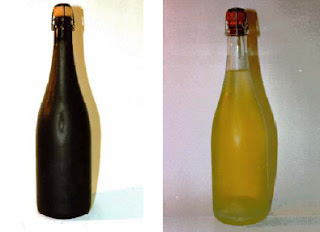1. Background. The company Freixenet filed applications with the Office for Harmonization in the Internal Market (OHIM) for trademark registrations consisting of the image of a glass bottle described as a “frosted black matt bottle” and the image of another bottle described as a “white polished bottle which, when filled with sparkling wine, takes on a golden matt appearance similar to a frosted bottle”. In its applications Freixenet declared that it did not wish to obtain protection for the shape of the packaging, but rather for the specific appearance of its surface.
The OHIM refused the trademark applications on the grounds that they were devoid of distinctive character for the purposes of Article 7.1 b) of the “Community Trademark Regulation” (Regulation 40/94). This decision was confirmed by the OHIM’s Board of Appeal and later by the General Court. Freixenet filed a cassation appeal with the Court of Justice of the European Union (CJEU).
2. Findings. The CJEU began by reviewing its own case-law on the distinctive character of trademarks within the meaning of Article 7.1 b) of Regulation 40/94, particularly with respect to three-dimensional trademarks. According to that case-law, since average consumers are not in the habit of making assumptions about the origin of products on the basis of their shape or the shape of their packaging in the absence of any graphic or word element, only a mark which departs significantly from the norm or customs of the sector and thereby fulfils its essential function of indicating origin is not devoid of any distinctive character.
The CJEU holds that this case-law also applies to the trademarks sought by Freixenet, even though they do not claim the shape of the packaging, but rather the specific appearance of its surface. It concludes that the General Court had erred in not having based its assessment of the case on the aforementioned doctrine.
The judgment states that instead of checking whether the trademarks that had been applied for departed significantly from the norm or customs of the sector, the General Court merely made the general observation that the colour and polish of the glass of the bottle could not function as a trademark unless used in relation to a word element. According to the CJEU, this appraisal means that all trademarks consisting of the shape of the packaging of the product itself, without a word component, would automatically be excluded from the protection conferred by a Community trademark.
As a result, the CJEU set aside the judgment of the General Court and annulled the decisions of the OHIM which refused to grant registration to Freixenet’s marks.
3. Remarks. This judgment by the CJEU is certainly good news for drinks producers, given that it confirms the possibility of registering a particular feature or characteristic of a bottle as a Community trademark without the need for it to be accompanied by a word element, provided, of course, that it is sufficiently distinctive, in which respect it will be necessary to ensure that it “departs significantly from the norm or customs of the sector”.


